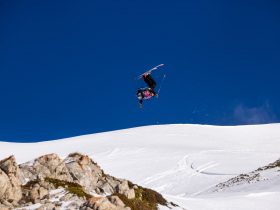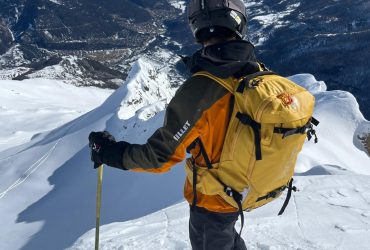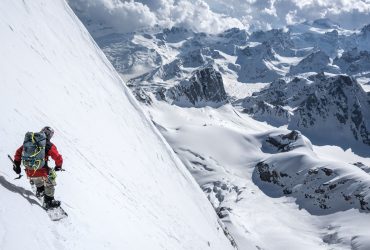Balancing on a strap a few centimetres wide, highline specialists walk above the void. Some crossings are more than a kilometre long and are made at a height of 300 metres.
You have probably already seen in a park or a garden these slackline straps stretched between two trees. You may also be a practitioner of this sport, which many athletes use to improve their coordination, reflexes and balance. Highlining is a derivative of slacklining, which appeared in the 1980s and has recently been popularized by increasingly crazy records (see below). Here, the heights can be counted in hundreds of meters for the best and the practitioners are obviously rarer. The latter are secured by a cable linking their harness to the slackline.
France is one of the pioneering countries in this field, and boasts a number of benchmark highlineers, including Nathan Paulin (pictured above), Pablo Signoret, Guillaume Barrande, Antony Newton and Lucas Milliard. Highline can be practised in both natural and urban environments. And it's in the wild that the discipline offers its most beautiful images. We're thinking in particular of the world highline distance record achieved in June 2017 by the French slackline team "Sangle Dessus-Dessous" (see video below).
The setting for this huge project was the Cirque de Navacelles, a valley in the Massif Central in the heart of a UNESCO World Heritage Site. It was here that a 1,662-metre high webbing was stretched 340 metres above the void. Of the four highliners who tried their luck (the record is only validated once a participant has completed the climb without falling), three succeeded in reaching the end. A real feat, since such a long highline is obviously even more sensitive to wind disturbances. Very flexible, these straps are far from stable, and you need patience and perseverance to reach the finishing point facing you.
If highlining can be combined with record-breaking, it is above all an opportunity for practitioners to discover some of the most beautiful spots in the world in a different way. Three years ago, an expedition led by Nathan Paulin and Antony Newton took them to the Marquesas Islands. The latter form one of the five archipelagos of French Polynesia and are particularly inaccessible.
It was there that the two men (aided by navigator Erwan Le Lann) installed the first highline straps ever to be set up on the archipelago. At the end of a trip that was far from easy, they succeeded in making some unique crossings. "It is a feeling of freedom that is further enhanced by the places themselves"Nathan Paulin explained. "When you walk in the air in a beautiful place, you feel free. You can almost think you're a bird because you're playing with the movements, with the strap, with the amplitude. Sometimes I don't feel the force of gravity anymore.“










